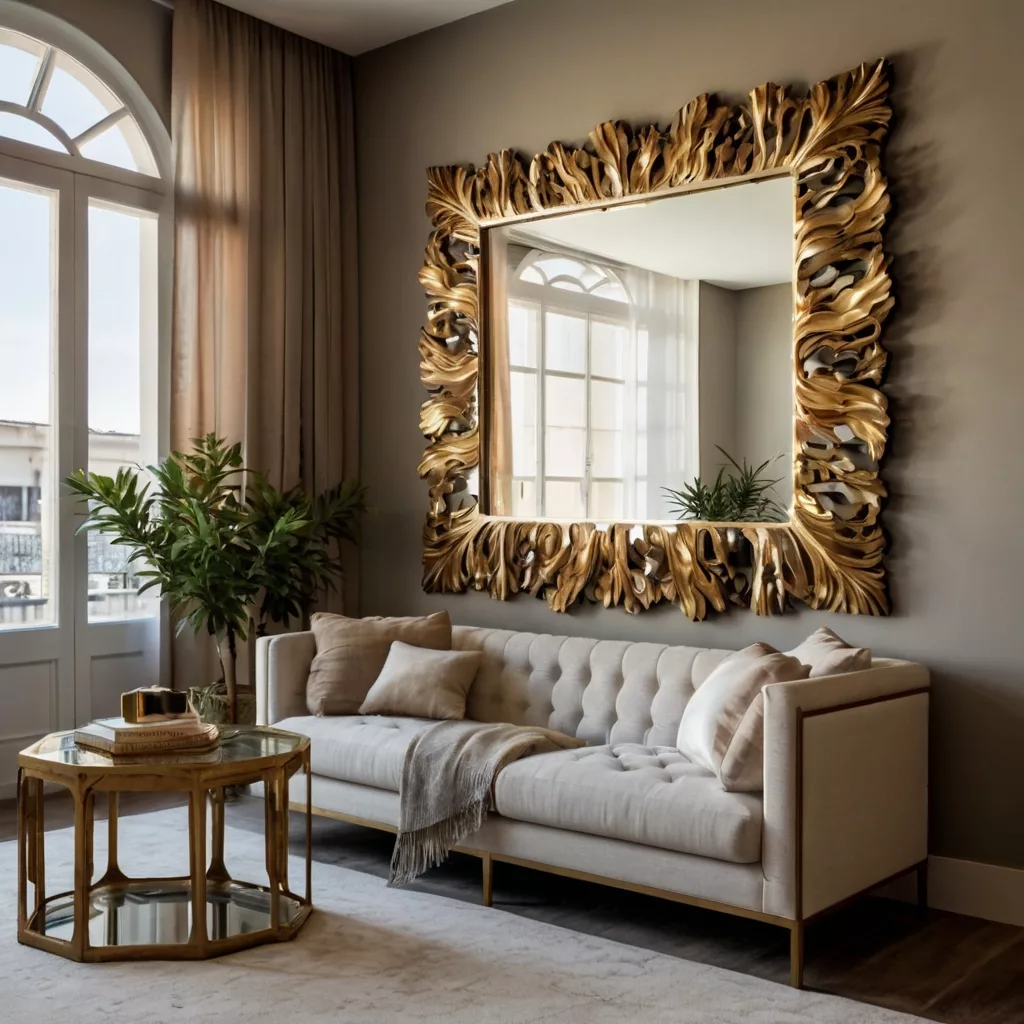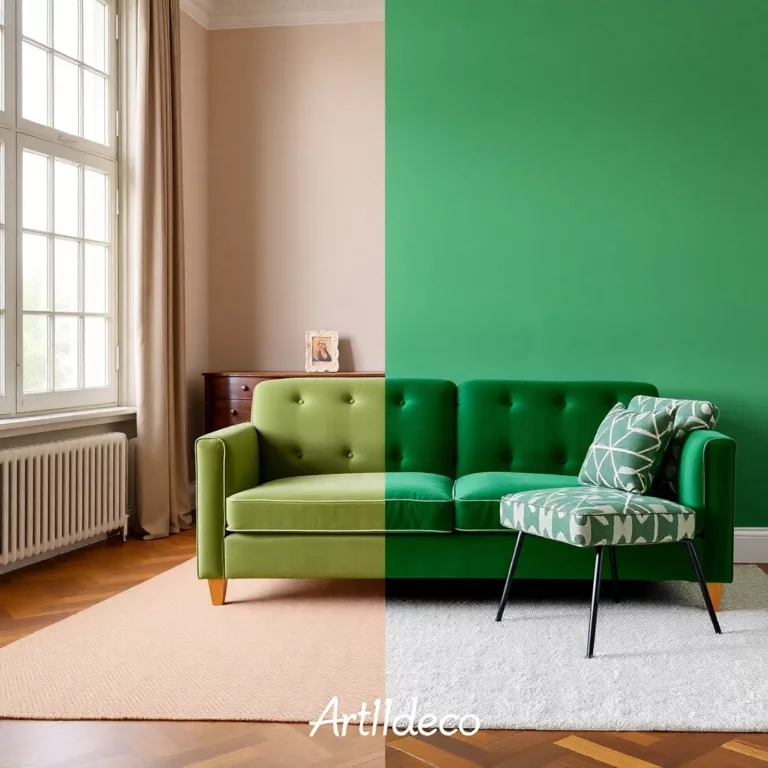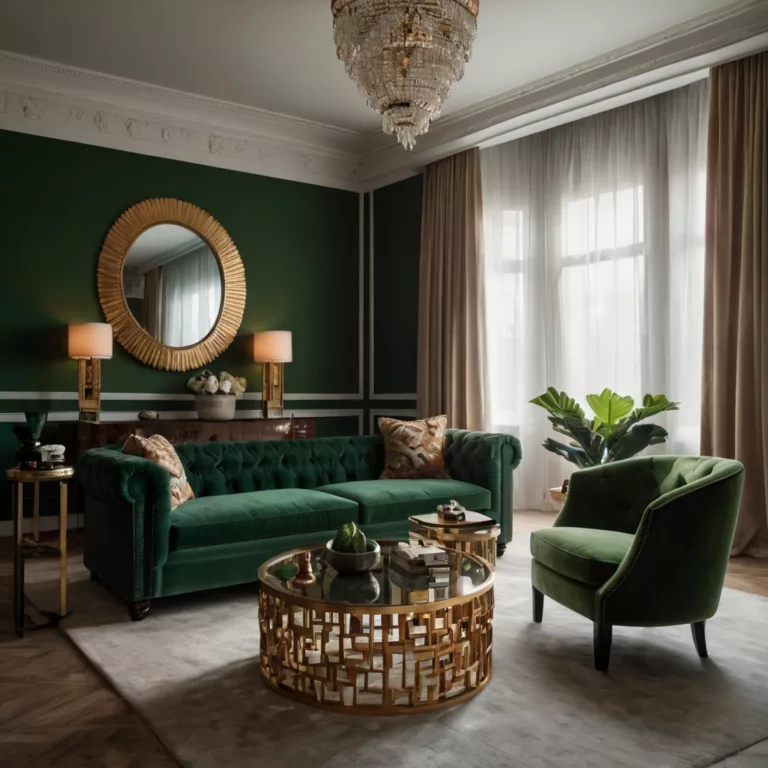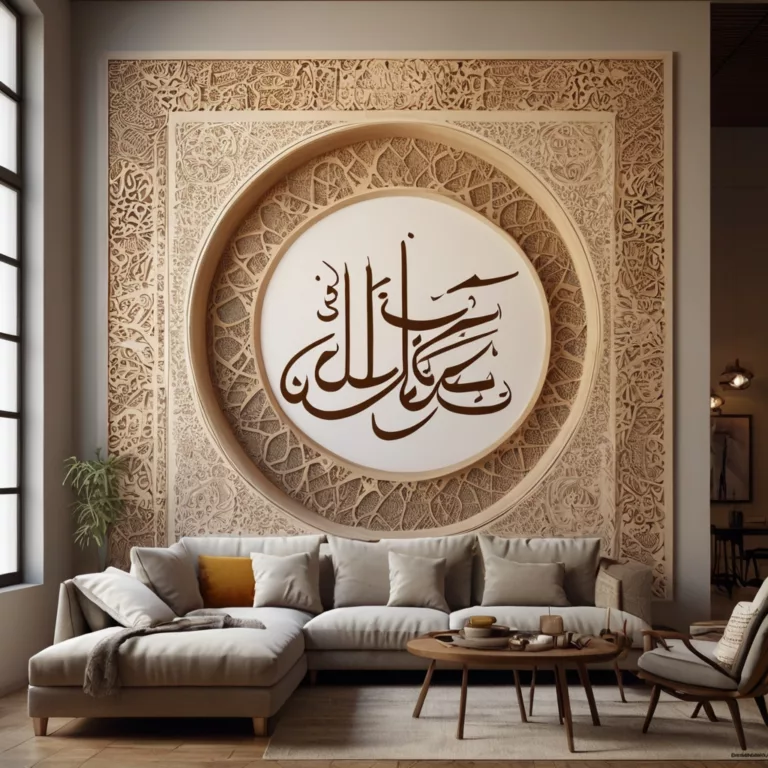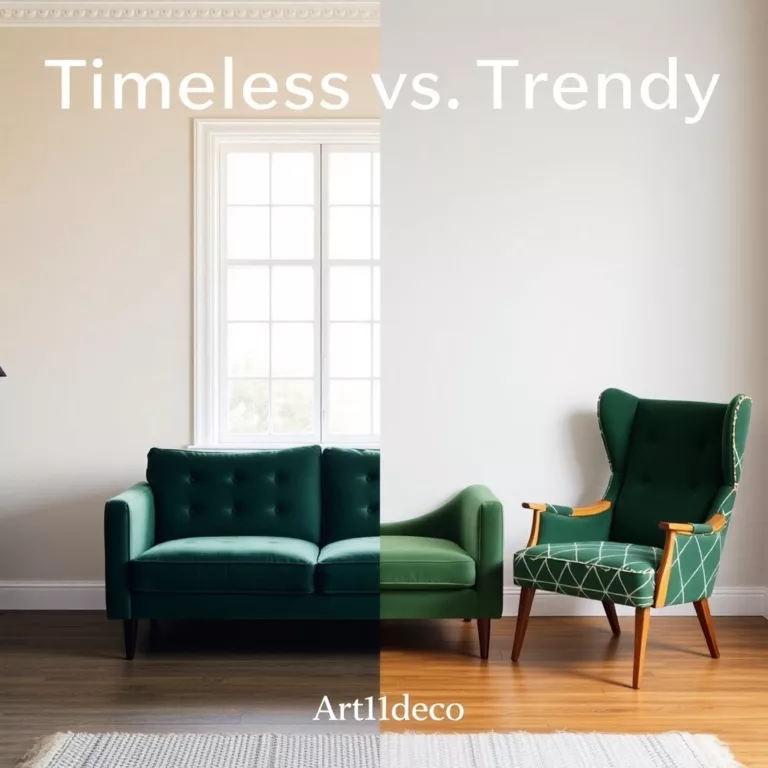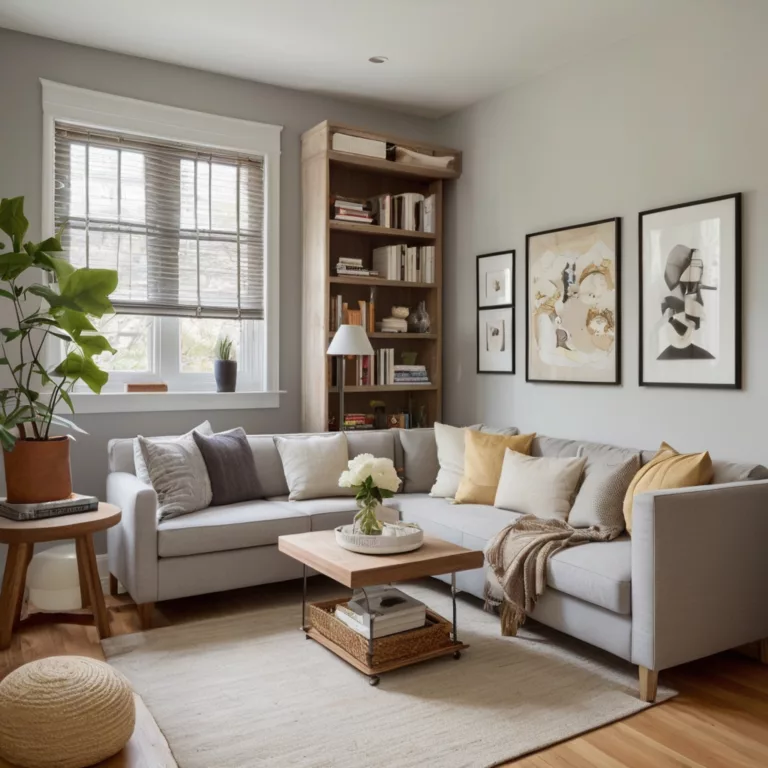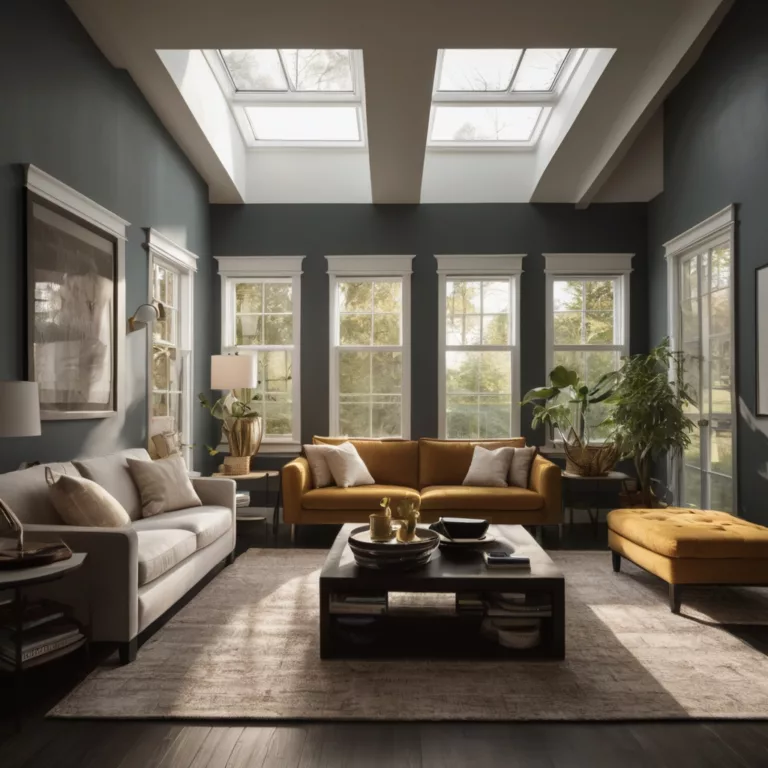The Ultimate Guide to Mirror Wall Decor: Techniques, Applications, and Design Principles
Introduction
Mirror wall decor has evolved from simple functional objects to sophisticated design elements that can transform interior spaces dramatically. This comprehensive exploration delves into the art and science of using mirrors as wall decor, examining everything from historical context to cutting-edge installation techniques and emerging design trends. Whether you’re an interior design professional seeking technical specifications or a homeowner looking to enhance your living space, this guide offers valuable insights into the versatile world of mirror wall applications.
Historical Evolution of Mirrors in Interior Design
Ancient Origins
The earliest mirrors, dating back to 6000 BCE, were crafted from polished obsidian in Turkey and Central America. Ancient Egyptians and Mesopotamians later developed metal mirrors made from polished copper, bronze, silver, and gold. These early mirrors were primarily functional rather than decorative, though they often featured ornate handles and backs that hinted at their eventual decorative potential.
The Venetian Revolution
The true transformation of mirrors into decorative elements began in 16th century Venice with the development of crystalline glass mirrors. The Venetian mirror-making guilds on Murano Island guarded their techniques closely, creating mirrors that were considered luxury items reserved for nobility. These mirrors featured elaborate frames and were often incorporated into palace designs across Europe.
The Hall of Mirrors
Perhaps the most famous historical use of mirrors in interior design is the Hall of Mirrors (Galerie des Glaces) at the Palace of Versailles, completed in 1684. This magnificent gallery, featuring 357 mirrors, demonstrated the dramatic spatial effects and light amplification that strategic mirror placement could achieve.
Technical Aspects of Modern Mirror Manufacturing
Glass Types and Manufacturing Methods
Modern mirrors utilize several types of glass substrates:
- Float Glass: Most common base material, manufactured by floating molten glass on a bed of molten tin.
- Thickness range: 2mm to 19mm
- Standard sizes: Up to 3.21m × 6m
- Low-Iron Glass: Contains minimal iron oxide for exceptional clarity.
- Visible light transmission: >91% (compared to 83-85% for standard float glass)
- Reduced green tint visible on edges
- Tempered Glass: Heat-treated for increased strength and safety.
- Impact resistance: 4-5 times stronger than annealed glass
- Disintegrates into small, relatively harmless pieces when broken
- Laminated Glass: Multiple layers bonded with PVB (polyvinyl butyral) or EVA (ethylene-vinyl acetate) interlayers.
- Safety rating: Class A safety glass
- Sound insulation: Reduces noise transmission by up to 50%
Reflective Coatings
Modern mirror production relies on advanced coating technologies:
- Silver-Based Coatings: Traditional method offering excellent reflectivity.
- Reflectivity rating: 94-97%
- Application method: Silver nitrate solution reacted with reducing agents
- Aluminum-Based Coatings: More durable but slightly less reflective.
- Reflectivity rating: 88-92%
- Cost advantage: 15-20% less expensive than silver coating
- Chrome-Based Coatings: Used for specialized applications.
- Reflectivity rating: 65-70%
- Advantage: Superior durability in harsh environments
- Multi-Layer Protective Backings: Copper backing layers and specialized paint systems.
- Moisture resistance: ASTM B117 salt spray test rating (100+ hours)
- Expected lifespan: 15-25 years under normal conditions
Specialized Mirror Types
- Antique Mirrors: Artificially aged using controlled oxidation processes.
- Techniques: Chemical aging, controlled silver deterioration
- Applications: Vintage interiors, accent walls
- One-Way Mirrors: Partially reflective surfaces that are transparent from one side.
- Light transmission ratio: Typically 30/70 (transmission/reflection)
- Privacy factor: Requires 8:1 light ratio between reflected and observed sides
- Smart Mirrors: Integrated with LED displays and electronic components.
- Resolution capabilities: Up to 4K display integration
- Applications: Information displays, smart home integration
Design Principles for Mirror Wall Installations
Spatial Enhancement Techniques
- Expansion Effect: Strategic placement to visually enlarge spaces.
- Optimal placement: Wall opposite to natural light source
- Effectiveness measurement: Up to 40% perceived spatial increase
- Depth Creation: Using mirrors to add perceived depth to rooms.
- Technique: Full-wall installation with minimal framing
- Enhanced effect: Combined with strategic lighting
- Sectional Zoning: Using mirrors to define functional areas.
- Application: Open-plan spaces, studio apartments
- Implementation: Partial wall coverage or mirrored room dividers
Light Manipulation
- Light Amplification: Maximizing natural and artificial light.
- Light gain potential: 80-95% reflection depending on mirror quality
- Energy efficiency benefit: Potential reduction in artificial lighting needs
- Directional Reflection: Bouncing light into specific areas.
- Technique: Angled installation or framed mirror positioning
- Applications: Dark corners, north-facing rooms
- Ambient Light Enhancement: Creating atmospheric effects.
- Method: Combination with strategic lighting fixtures
- Effect: Layered lighting with primary, secondary, and ambient sources
Aesthetic Considerations
- Proportional Balance: Size and scale relationships.
- Golden ratio application: Mirror dimensions following 1:1.618 ratio
- Room proportion guideline: Mirror coverage 30-40% of wall space
- Frame Integration: How framing affects overall design.
- Contemporary trend: Minimal or frameless designs
- Traditional application: Ornate frames as focal points
- Composition Rules: Arrangement principles for multiple mirrors.
- Symmetric arrangement: Formal, balanced aesthetic
- Asymmetric arrangement: Dynamic, contemporary feel
- Grid pattern: Organized, structural appearance
- Clustered arrangement: Eclectic, artistic expression
Installation Techniques and Considerations
Mounting Methods
- Adhesive Systems:
- High-performance silicone adhesives
- Shear strength: 1.2-1.5 MPa
- Temperature resistance: -40°C to 150°C
- Construction adhesives with grab properties
- Initial grab: 60-80 kg/m²
- Full cure time: 24-48 hours
- VHB (Very High Bond) tape
- Tensile strength: Up to 41 N/cm²
- Thickness options: 0.4mm to 3.0mm
- Mechanical Fastening:
- J-channels and clips
- Load capacity: 30-50 kg/m depending on system
- Visibility: Concealed fastening system
- Mirror mastic with mechanical backup
- Safety factor: Redundant support system
- Building code compliance: Meets IBC requirements
- Track Systems:
- Top and bottom aluminum tracks
- Weight capacity: Up to 8 kg/m²
- Adjustability: 3-5mm vertical and horizontal
- Concealed profile systems
- Integration capability: Flush with wall surfaces
- Installation tolerance: ±2mm
Safety Considerations
- Backing Materials:
- Safety backing films
- Impact resistance: Class A safety rating
- Application method: Pressure-sensitive adhesive
- Mesh reinforcement
- Fragmentation control: Contains glass fragments upon breakage
- Mounting compatibility: Works with all standard mounting systems
- Edge Treatment:
- Polished edges
- Safety improvement: Reduced sharp edge hazard
- Aesthetic benefit: Clean, professional appearance
- Beveled edges
- Angle options: 5°, 10°, 15°, and 22.5°
- Light effect: Creates prismatic light effects
- Compliance Factors:
- Building code requirements
- Ceiling height mirrors: Special mounting requirements
- Public space installation: Tempered or laminated glass mandatory
- Insurance considerations
- Risk assessment: Professional installation documentation
- Liability factors: Proper backing and mounting verification
Environmental Considerations
- Humidity Resistance:
- Protective coatings
- Moisture barrier rating: Level 2-4 (ASTM D1653)
- Application zones: Bathrooms, pool areas, coastal regions
- Edge sealing techniques
- Materials: Silicone, epoxy, or specialized sealants
- Application method: Minimum 2mm penetration depth
- Temperature Fluctuations:
- Expansion joints
- Requirement: 2mm expansion space per meter of mirror
- Implementation: Flexible mounting systems or expansion profiles
- Installation buffer zones
- Clearance from heat sources: Minimum 300mm from radiators
- Exterior wall mounting: Vapor barrier consideration
Creative Applications and Design Trends
Contemporary Design Approaches
- Geometric Configurations:
- Hexagonal patterns
- Installation complexity: Medium to high
- Visual impact: Strong honeycomb effect
- Mixed geometrics
- Component shapes: Combination of squares, rectangles, circles
- Arrangement: Random or structured patterns
- Backlit Mirror Installations:
- LED integration
- Color temperature options: 2700K-6500K
- Energy efficiency: 85% more efficient than traditional lighting
- Edge lighting techniques
- Light distribution: Even perimeter illumination
- Installation depth requirement: 25-40mm recess
- Digitally Printed Mirror Surfaces:
- Pattern overlay technology
- Resolution capability: Up to 1440 dpi printing
- Durability: UV-resistant inks with 5-10 year interior lifespan
- Partial transparency techniques
- Effect: Selective reflection and transparency
- Applications: Artistic installations, privacy screens
Cultural and Regional Variations
- Mediterranean Influence:
- Mosaic mirror techniques
- Historical precedent: Byzantine and Moorish design traditions
- Modern application: Digital printing and fragmented installation
- Colorful frame integration
- Material palette: Terracotta, azure blue, sunbaked yellow
- Textural elements: Rough-hewn wood, hand-painted ceramic
- Scandinavian Approaches:
- Minimalist framing
- Material preference: Pale woods, particularly ash and birch
- Profile dimensions: Ultra-thin (5-10mm) framing
- Integrated functionality
- Multi-purpose design: Combined with storage or organization systems
- Clean aesthetic: Hidden mounting hardware
- Asian-Inspired Techniques:
- Shoji-influenced divisions
- Grid patterns: Geometric divisions reminiscent of traditional screens
- Light effect: Diffused reflection with structural elements
- Nature-based shapes
- Organic forms: Leaf shapes, bamboo-inspired elements
- Balance principle: Asymmetrical but harmonious arrangements
Practical Applications by Room
Living Spaces
- Statement Walls:
- Full coverage techniques
- Installation method: Edge-to-edge with minimal seams
- Visual effect: Dramatic spatial doubling
- Partial wall application
- Coverage recommendation: 60-80% of focal wall
- Integration: Combined with complementary wall treatments
- Fireplace Surrounds:
- Heat-resistant considerations
- Safe distance: Minimum 900mm from open flame
- Material specification: Tempered glass with heat-resistant backing
- Architectural framing
- Style integration: Mirror proportions matching architectural elements
- Visual anchoring: Creating centered focal point
Dining Areas
- Table Reflection Enhancement:
- Chandelier amplification
- Placement strategy: Mirror positioned to reflect dining table lighting
- Effect: Multiplied light points and enhanced ambiance
- Dining set complementation
- Style matching: Mirror frame coordinated with furniture design
- Proportional guideline: Mirror width 75-100% of table width
- Buffet and Server Backing:
- Practical application
- Functional benefit: Visibility of decorative items from all angles
- Protection aspect: Easy-clean surface behind serving areas
- Visual expansion
- Depth creation: Illusion of recessed dining area
- Space multiplication: Perceived doubling of dining space
Bedrooms
- Headboard Alternatives:
- Full-wall application
- Height guideline: From floor to 30cm above mattress top
- Width recommendation: Extending 30-45cm beyond bed sides
- Paneled installations
- Configuration: Vertical panels with 5-10mm spacing
- Framing option: Upholstered surrounds for softened effect
- Dressing Areas:
- Three-way mirror systems
- Angle configuration: Center panel with 30-45° side panels
- Mounting technique: Hinged or fixed installation
- Integrated vanity designs
- Lighting requirement: 750-1000 lumens at face level
- Mirror positioning: Center point at user’s eye level
Bathrooms
- Moisture-Resistant Installations:
- Anti-fog technologies
- Heating elements: 15-20W/ft² power density
- Activation methods: Touch sensors or humidity triggers
- Condensation management
- Ventilation integration: Coordinated with mechanical systems
- Protective treatments: Hydrophobic coatings with 2-3 year lifespan
- Storage Integration:
- Medicine cabinet evolution
- Contemporary designs: Recessed, frameless appearance
- Technology integration: LED lighting, USB charging, anti-fog
- Hidden storage solutions
- Push-to-open mechanisms: Concealed mirrors revealing storage
- Weight capacity: 5-8kg per hinge depending on system
Small Spaces and Challenges
- Hallway Enhancement:
- Narrow space optimization
- Mirror height: Full or three-quarter wall height
- Width consideration: Avoiding overwhelming narrow passages
- Movement flow improvement
- Placement strategy: Inside corners for spatial relief
- Safety factor: Non-disorienting positioning
- Awkward Area Solutions:
- Under-stair utilization
- Application: Following stair angle for dynamic effect
- Treatment: Segmented or continuous installation
- Nook amplification
- Purpose: Converting recessed areas into features
- Technique: Full mirror surface with integrated lighting
Maintenance and Longevity
Cleaning Techniques
- Professional Methods:
- Non-abrasive cleaners
- pH recommendation: 6-8 (slightly acidic to neutral)
- Application: Fine microfiber (200-300 gsm) with minimal pressure
- Edge and backing care
- Moisture control: Minimal liquid near edges
- Inspection routine: Quarterly check for backing degradation
- DIY Solutions:
- Homemade cleaners
- Effective formula: 1:1 white vinegar and distilled water
- Application method: Spray onto cloth, not directly on mirror
- Prevention techniques
- Bathroom tip: Applying shaving cream and buffing prevents fogging
- Protective measure: Quarterly application of rain repellent products
Restoration and Repair
- Resilvering Process:
- Professional restoration
- Process: Chemical stripping and reapplication of silver nitrate
- Cost factor: 60-80% of new mirror cost
- Edge damage management
- Repair possibility: Edge chips under 5mm can be polished out
- Touch-up technique: Specialized mirror paint for backing chips
- Frame Refurbishment:
- Wood frame care
- Maintenance schedule: Annual conditioning with appropriate oils
- Repair technique: Filling and color-matching for damaged areas
- Metal frame treatment
- Cleaning method: Non-acidic metal polish
- Protection: Clear coating application every 2-3 years
Environmental and Sustainability Considerations
Eco-Friendly Options
- Sustainable Manufacturing:
- Low-impact production
- Water usage: Closed-loop systems reducing consumption by 80%
- Energy efficiency: Advanced float glass furnaces with 30% reduced emissions
- Alternative materials
- Bio-based backing paints: VOC reduction of 90-95%
- Recycled content frames: Reclaimed wood or recycled aluminum
- End-of-Life Considerations:
- Recyclability factors
- Glass component: 100% recyclable infinite times
- Limitations: Backing materials must be separated
- Upcycling potential
- Creative reuse: Mosaic projects, decorative elements
- Commercial programs: Take-back initiatives by select manufacturers
Health and Wellness Factors
- Indoor Air Quality:
- VOC emissions
- Industry standard: GREENGUARD certification requirements
- Aging process: 85-90% of emissions occur within first year
- Safety standards
- Heavy metal content: Lead-free backing required for residential use
- Off-gassing period: 2-4 weeks for conventional products
- Biophilic Design Integration:
- Natural light enhancement
- Physiological benefit: Improved circadian rhythm regulation
- Psychological effect: Reduced seasonal affective response
- Nature reflection
- Application: Positioned to reflect outdoor elements
- Benefit: Connection to natural environment in interior spaces
Conclusion
Mirror wall decor stands at the intersection of functionality, aesthetics, and technical innovation. From the practical aspects of installation and maintenance to the artistic considerations of design and arrangement, mirrors offer unparalleled versatility in interior design. As manufacturing techniques continue to evolve and creative applications expand, the possibilities for incorporating mirror elements into residential and commercial spaces will only grow more diverse and sophisticated.
Whether used to solve spatial challenges, enhance lighting conditions, or create striking visual statements, mirror wall decor remains one of the most powerful tools available to designers and homeowners alike. By understanding the technical specifications, installation requirements, and design principles outlined in this guide, you can confidently incorporate mirror elements into your spaces for maximum impact and longevity.
References and Resources
For further exploration of mirror wall decor techniques and applications, the following resources provide valuable insights and specifications:
- American Society for Testing and Materials (ASTM) C1503 – Standard Specification for Silvered Flat Glass Mirror
- International Building Code (IBC) Section 2406 – Safety Glazing
- Glass Association of North America (GANA) Mirror Division – Technical Publications
- National Association of Home Builders (NAHB) – Guidelines for Mirror Installation
- The Interior Design Handbook: Professional Standards and Practices
- Architectural Lighting Design Principles and Practices
Art11deco

